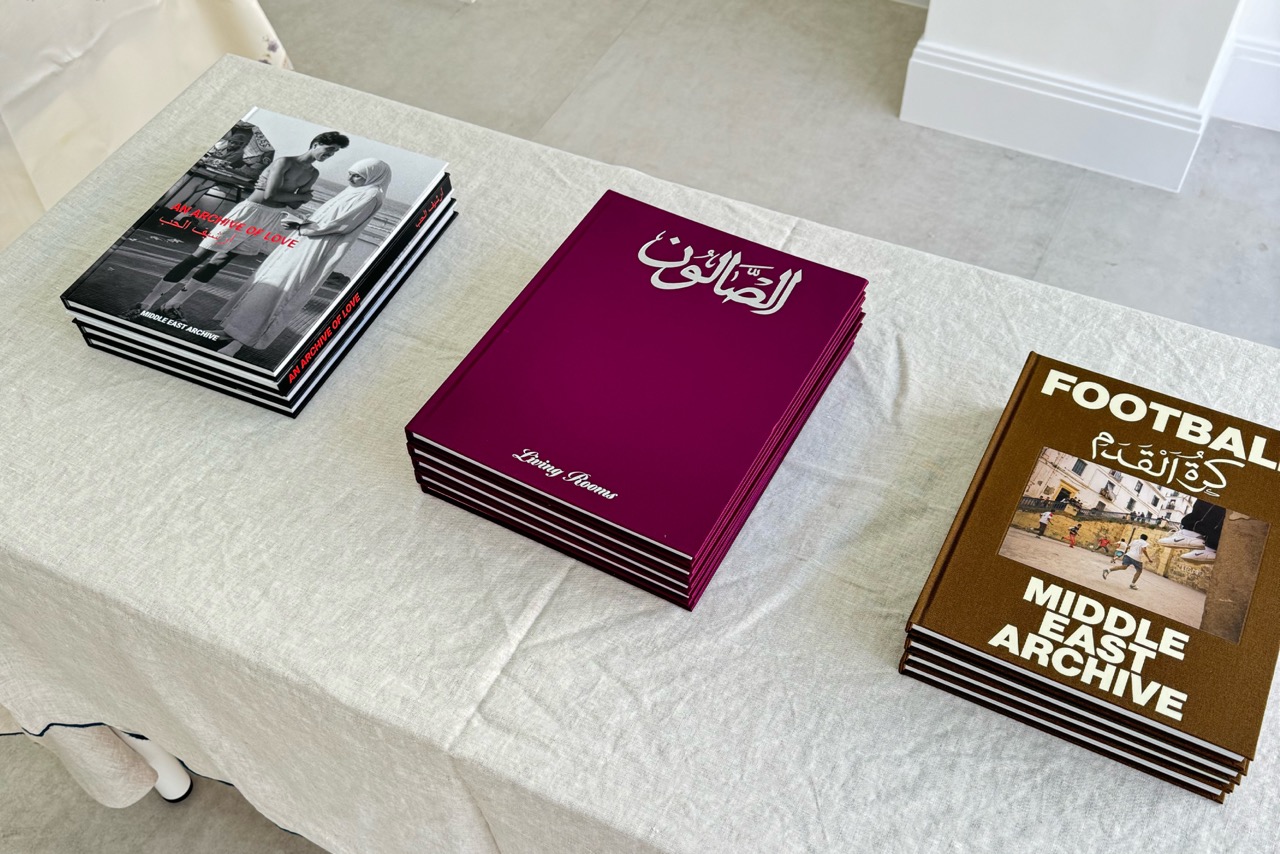 Posted in
Dazed MENA 100, Dazed MENA 100
Posted in
Dazed MENA 100, Dazed MENA 100
Middle East Archive: Visions of nostalgia and truth
Text Maya Abuali
If you’re Arab, or know Arabs, chances are you’ve spotted something by Middle East Archive resting on a coffee table in a friend’s home or tucked into the shelves of a relative’s study. Maybe it was the book itself, its pages alive with intimate, rare glimpses of life across SWANA, or perhaps a print or photograph from one of their stunning collections. The archive, founded by Moroccan-Egyptian curator Romaisa Baddar, has shifted beyond its origins as an Instagram page to become a cultural relic and home staple. Middle East Archive’s books reconnect diasporic Arabs with the unassuming beauty of their heritage and urge the world to see the region through fresh eyes, unoccluded by permeating bias.
Middle East Archive began in 2020 as a digital repository of candid, evocative photography of the region—moments that eschewed well-worn tropes of unrest for something much more accurate. “The misrepresentation and limited portrayal of the region in photography motivated me to create a space where these narratives could be corrected and expanded,” Romaisa explains to Dazed MENA. She began posting quotidian gems—affectionate, swimsuit-clad couples in pre-Civil War Lebanon, late-night revellers dancing in Syria, schoolchildren in Palestine tucking into their books—and the account soon thrived as a celebration of Arab community and connection.
Soon came the MEA’s inaugural photography book, created in collaboration with Lebanese photographer Fouad Elkhoury. Spanning the years 1980 to 1997 and featuring images from Palestine, Oman, Egypt, and Lebanon, the book captured life as it was lived. It pays special attention to the everyday wonders of the ‘old Middle East.’ The first of its kind, it sold out swiftly. “Founding Middle East Archive and Studio Samadi has been pivotal, allowing me to enter self-publishing and connect with inspiring photographers,” Romaisa tells us. “I aim to reimagine the region’s representation, promoting a variety of art forms that celebrate everyday life and lived culture.”
And reimagine the region’s representation she did. The next drop, An Archive of Love, took a nuanced look at love in its myriad forms—romantic, platonic, spiritual—across the SWANA region, pulling from decades of photography to anthologise these moments. In this edition, images straddle an even broader expanse of time and space: from the late 1960s up until 2022, in Morocco, Algeria, Iraq, Tunisia, Syria, Lebanon, Turkey, Egypt, Oman, Yemen, the UAE, Palestine and other countries in the region. What makes the images even more special is that they are extant artefacts, fated to be lost in time; MEA merely places them where they can be appreciated, effectively rebirthing them. Romaisa is most invigorated by this process of unearthing. “My work is fuelled by the continual discovery of new visual perspectives,” she posits.
Football كرة القدم, MEA’s third book, took on a jovial theme: an exhibition of football culture in Southwest Asia and North Africa, focusing on the sport’s place in daily ritual. Scoured and curated from across the region, these photographs stretched back to the 80s from 2023. With an array of shrewd photographers like Abbas, Karim Sahib, Jinane Ennarsi, and Alex Webb, to name a few, the book is replete with unforgettable shots: covered women cheering for their teams from the grainy glow of archaic TVs, jerseys strung like flags over neighbourhood washing lines, children with unbridled smiles scattered across make-shift asphalt arenas, and footballs frozen in trajectory. “I’d ultimately like to create a vast collection of photography books that more accurately represent our region beyond the lens of war and politics,” Romaisa states—well on her way to a library of fulfilment.
Their most recent book, In the Name of God, is a love letter to Islam and its intrinsically peaceful nature. Produced against the setting of intensifying Islamophobia in France, the book punctuates the necessity of accurate and nuanced representation. The photography illuminates the cultural and spiritual lives of France’s Muslim diaspora, portraying their daily expressions of faith and communal practices. Featuring works by renowned photographers such as Algeria’s Mohamed Lounes and Iran’s Abbas, among others, the collection seeks to celebrate the profound beauty of Islam and its ummah.
Collaborations with local photographers and creative collectives across Southwest Asia and North Africa are a crucial aspect of MEA’s operation. “I hope to see the region’s creative industry gain global recognition and sustainability, with local artists shaping the narrative,” Romaisa conveys. With a new photography book underway, along with the publication of additional titles with Studio Samadi, Romaisa is set to continue excavating and piecing together layered memories long left fragmented and buried. Her curatorial eye is offering the world a renewed vision of SWANA—one as warm, multifaceted, and alive as the region itself.
